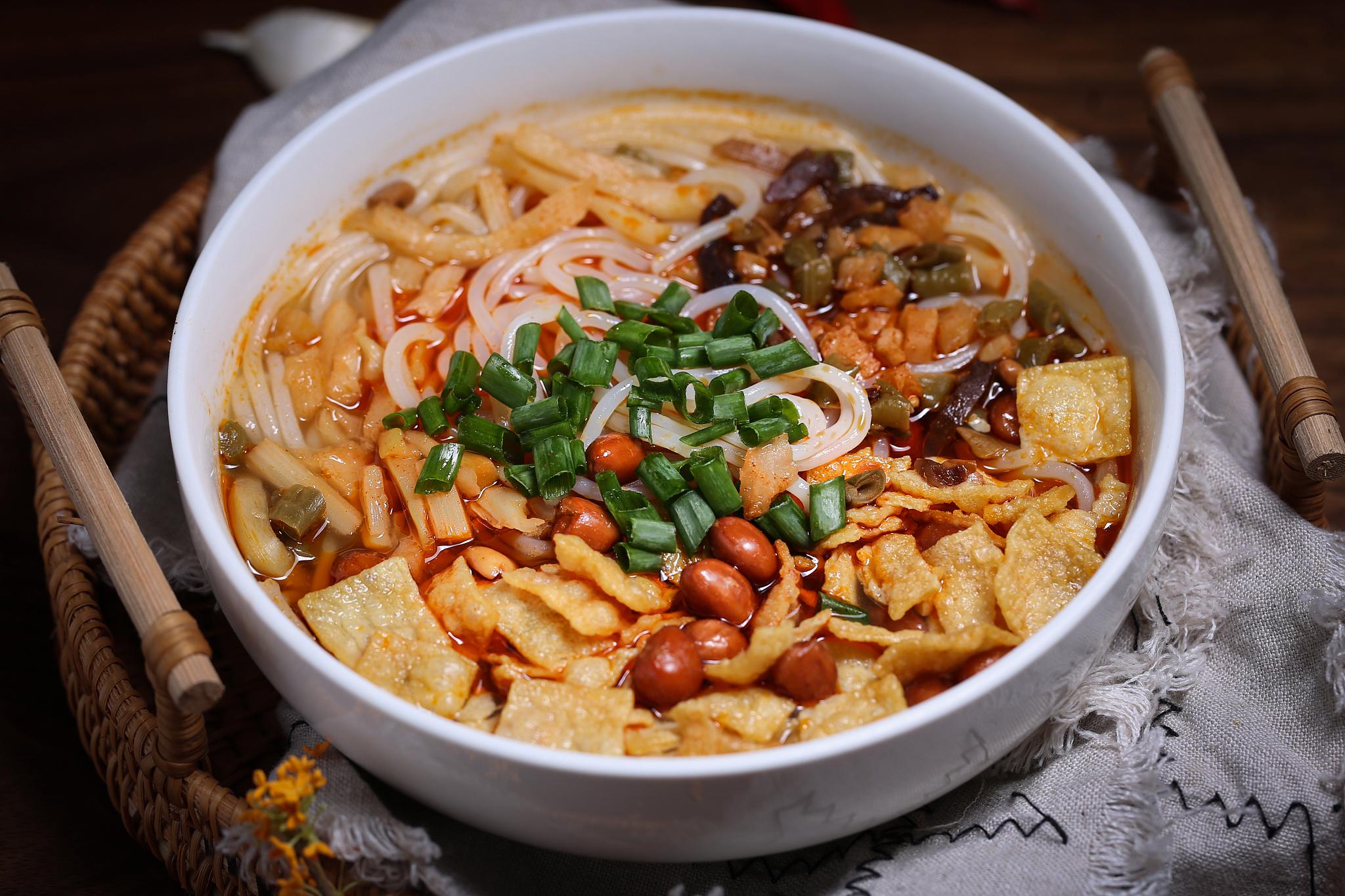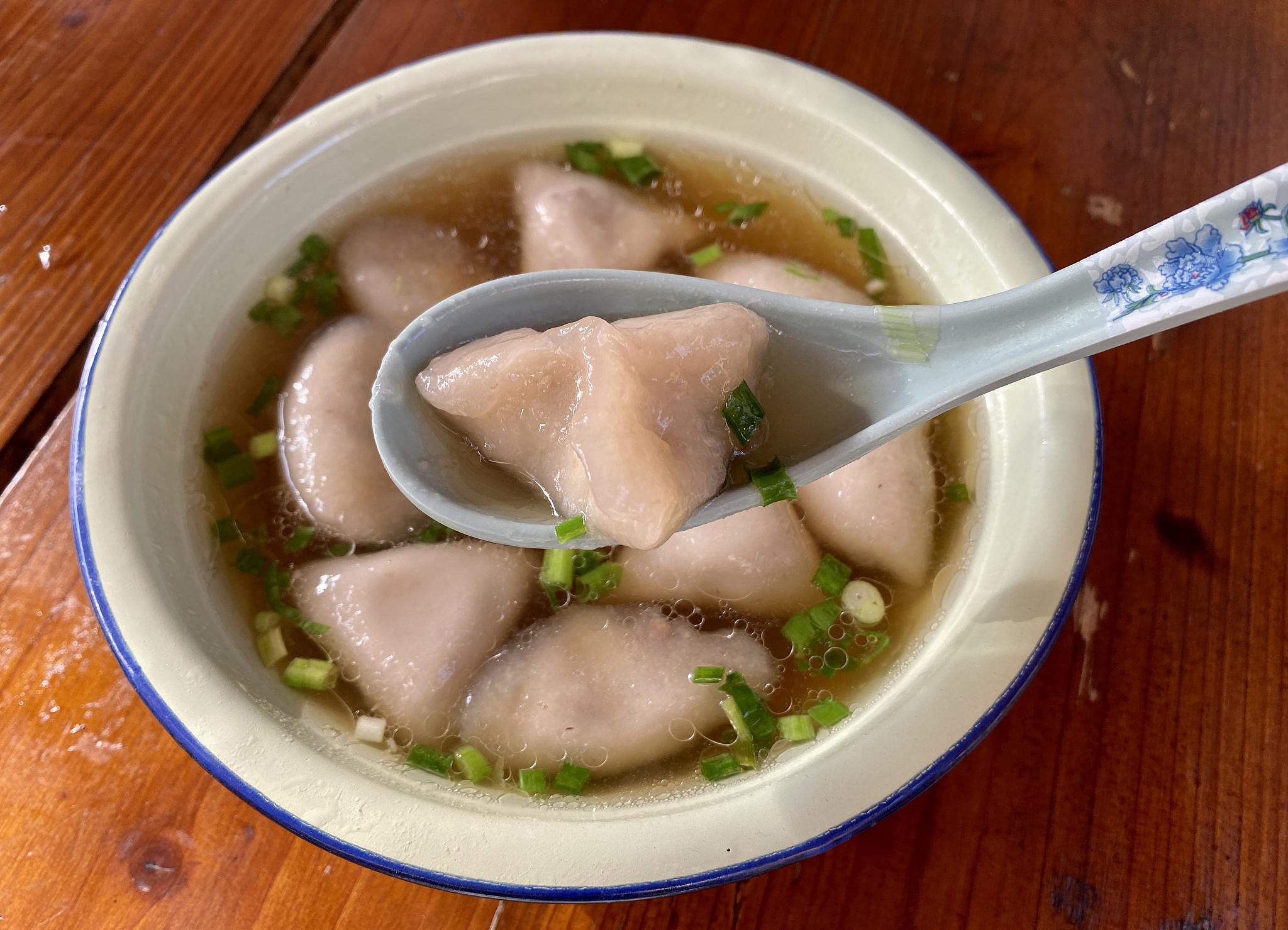China's Ministry of Culture released the Fifth National List of Representative Elements of Intangible Cultural Heritage of China on Thursday, adding 185 items to the list, including the skills involved in making luosifen, the iconic noodle soup from south China's Guangxi Zhuang Autonomous Region, and Shaxian snacks, delicacies originating in Shaixan County in southeast China's Fujian Province.
The items are organized into nine categories: Folk Literature, Traditional Music, Traditional Dance, Traditional Opera or Drama, Narrative or Storytelling Traditions, Traditional Sports or Recreational Activities and Acrobatics, Traditional Arts, Traditional Handicraft Skills and Folk Customs.
So far, the State Council has added a total of 1,557 items on the list of National Representative Elements of Intangible Cultural Heritage.
From local snack to online celebrity
Luosifen, or river snail rice noodles, is an iconic dish known for its pungent smell in the southern Chinese city of Liuzhou. The smell can be repulsive for the first-timers, but those who try it say they can never forget the magical taste.
Combining the traditional cuisine of the Han people with that of the Miao and Dong ethnic groups, luosifen is made by boiling rice noodles with pickled bamboo shoots, dried turnip, fresh vegetables and peanuts in spiced river snail soup.
It is sour, spicy, salty, hot and stinky after being boiled.

Luosifen, or river snail rice noodles, is an iconic dish known for its pungent smell in the southern Chinese city of Liuzhou. /CFP
Luosifen, or river snail rice noodles, is an iconic dish known for its pungent smell in the southern Chinese city of Liuzhou. /CFP
Originating in Liuzhou in the 1970s, luosifen served as an inexpensive street snack that people outside of the city knew little about. It was not until 2012 when a hit Chinese food documentary, "A Bite of China," featured it that it became a household name. And two years later, China had the first company to sell packaged luosifen.
The development of the internet, especially the boom of e-commerce and online eating show, has brought this Chinese local food fervor to a new level. Luosifen often shows up in videos by food bloggers and eating show hosts. One of the most influential is Li Ziqi, who has 15.5 million subscribers on YouTube. Her video of how to make luosifen has gained more than 61 million views on the website.
The development of the internet allowed luosifen to gain global fame, and the sudden COVID-19 pandemic boosted the sales of this delicacy in China.
According to data from the year start, luosifen became the most popular Chinese New Year's snack this year on e-commerce platforms, as Chinese people had a stay-at-home holiday due to the COVID-19 pandemic. According to data from Tmall and Taobao, both e-commerce platforms under Alibaba, the turnover of luosifen was 15 times more than last year's, with the number of buyers growing nine times year on year. The largest group of buyers was the post-90s generation.
As luosifen becomes more and more popular, the local government is trying to establish official international presence of this unique delicacy. In 2019, authorities in Liuzhou City said they were applying for UNESCO's recognition of luosifen as an intangible cultural heritage.
Different from luosifen, Shaxian snacks is a shining example of Chinese food chain brands. Shaxian snacks is a popular restaurant chain from southeast China's Fujian Province. It most likely includes foods such as steamed dumplings, noodles and wonton. It started as a single booth in a street market and expanded to more than 60 countries.

Dumplings with Taro, a kind of Shaxian snacks. /CFP
Dumplings with Taro, a kind of Shaxian snacks. /CFP
Compared with other catering chain brands, Shaxian is more like a cooking style. The different shops will have different menus, but in general, they may contain noodles, wonton, dumplings, stew with soup, braised food, fried rice and combo meal, which have strong Fujian characteristics.
Tens of thousands of Shaxian snack shops opened in the first few years. But soon the company faced problems like the illegal use of their brand name and insufficient food safety controls. Then the local government established the Shaxian Snack Bureau in 1997. This move has turned Shaxian snacks into an industrial chain that pays more attention to food safety.
Now the local authorities are working to unify, standardize and modernize operations at the restaurants to turn the brand into a successful and safe food business worldwide. Shaxian snacks have shops in 62 countries and regions include Japanese, American, French, Portuguese and Malaysian markets and its trademark registration has been approved in eight countries.
The history of protection
Besides these two delicacies' production and skills, the list also includes excellent skills in other fields and cultural heritages that are in urgent need of protection, and China is expanding the list of precious cultural heritages every year.
In December 2004, China ratified UNESCO's Convention for the Safeguarding of the Intangible Cultural Heritage, and in 2005, under the coordination of the Ministry of Culture, the Office of Ministry Level Joint Conference was established to undertake the work of making the guidelines and policies for Chinese intangible cultural protection, and to examine, approve and coordinate protection programs for Chinese intangible cultural heritage.
A year after, the State Council released the First National Intangible Cultural Heritage List comprising 518 items and followed it up with a list of another 510 in 2008, 191 in 2011 and 153 in 2014.
Most of the nation's provincial administrative units followed suit, drawing up lists of their own, as did many municipal- and county-level administrative units such as prefecture-level cities or districts. The number of elements is a testament to the tremendous variety of arts and culture found in a country as geographically vast, historically rich and ethnically diverse as China.
Since China passed the Intangible Cultural Heritage Law in 2011, 26 provinces and regions have issued guidelines for the protection of their intangible cultural heritage. And with more than 1 billion yuan ($156.63 million) being invested every year in research and maintenance, the country's intangible cultural heritage now has both legal and fiscal protection, according to China Daily.
(Cover: Luosifen and Shaxian snacks. /CFP)

